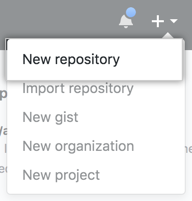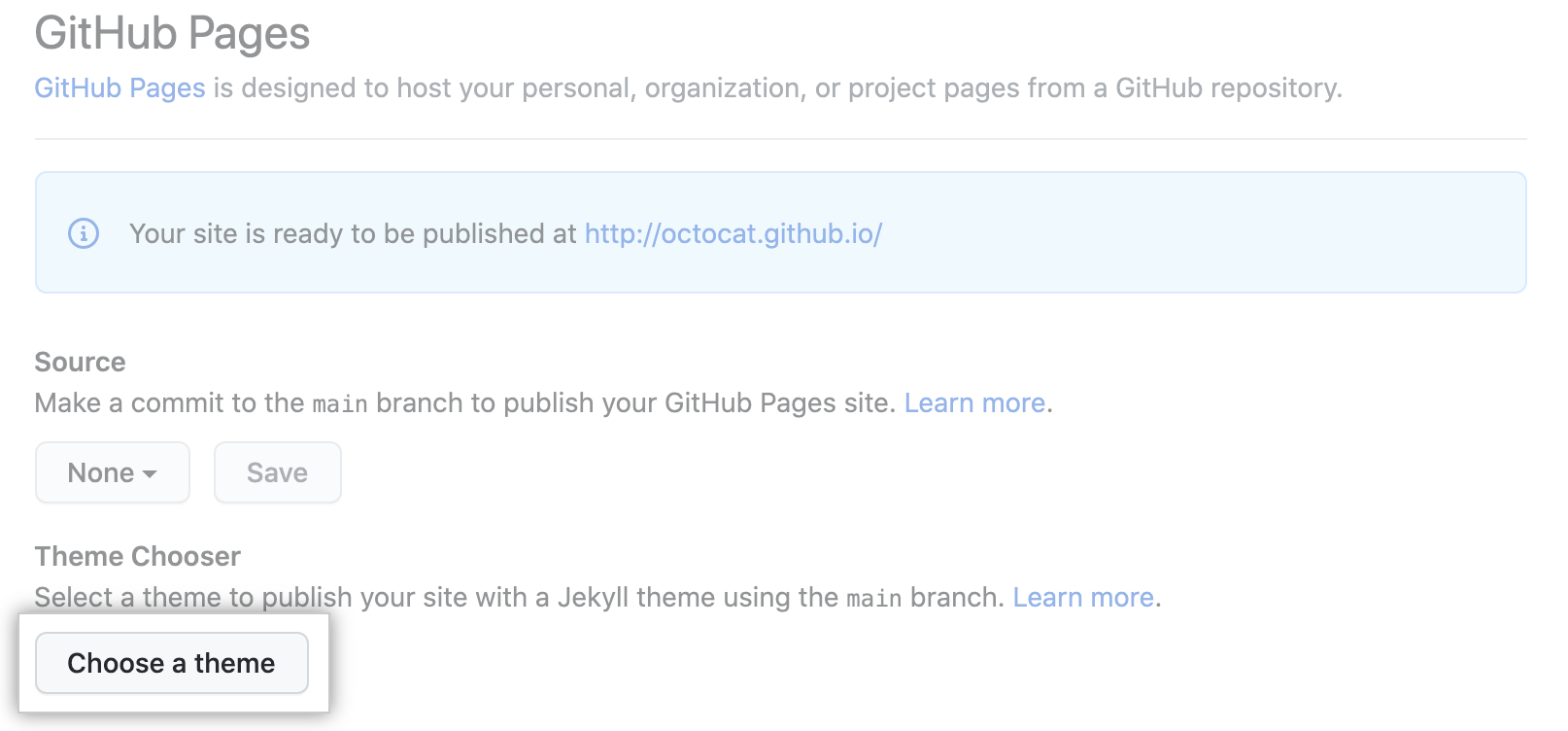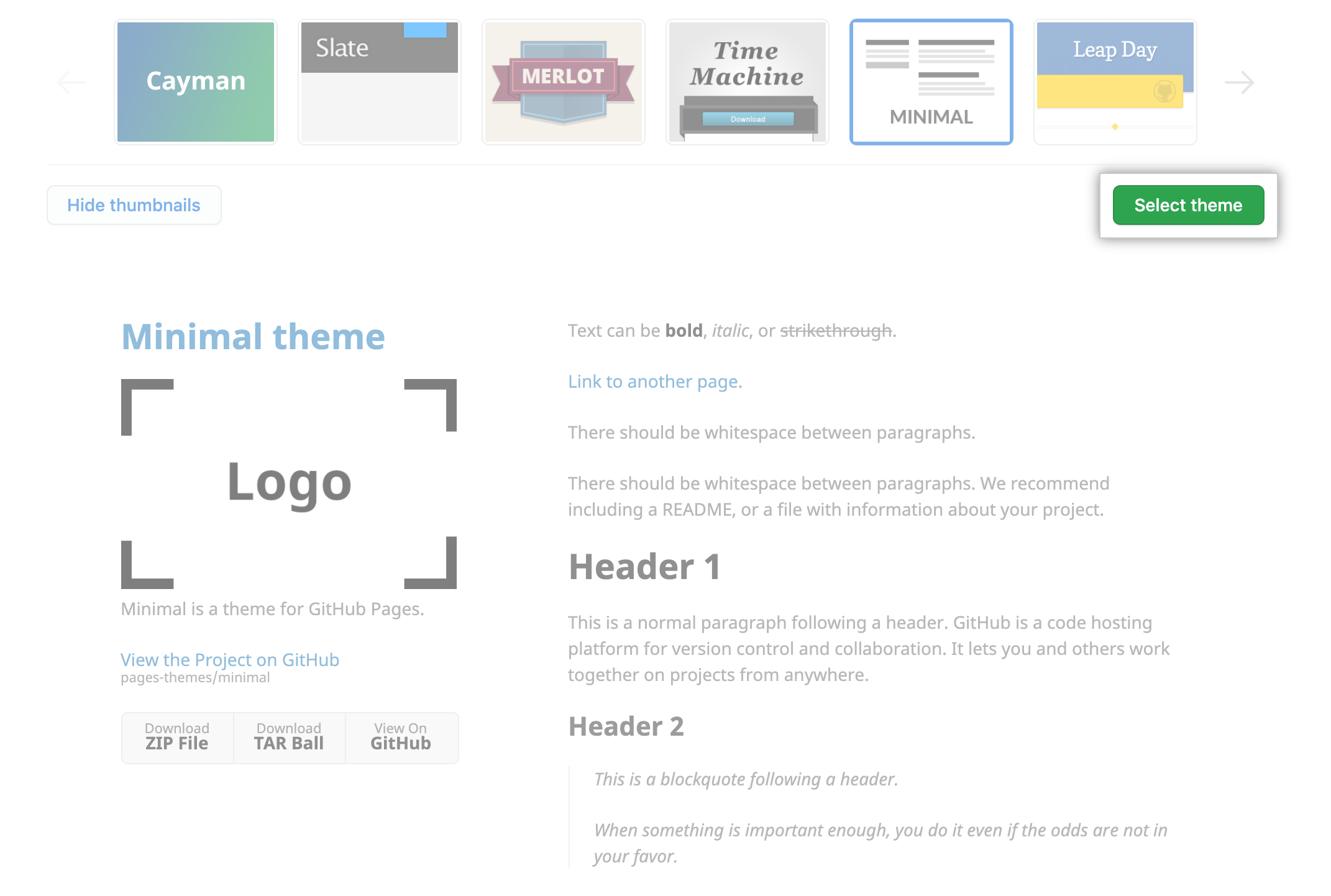GitHub Pages Tutorial. Quickstart
Quickstart for GitHub Pages
- Introduction
- Creating your website
- Changing the title and description
- Next Steps
You can use GitHub Pages to showcase some open source projects, host a blog, or even share your résumé. This guide will help get you started on creating your next website.
Introduction
GitHub Pages are public webpages hosted and published through GitHub. The quickest way to get up and running is by using the Jekyll Theme Chooser to load a pre-made theme. You can then modify your GitHub Pages' content and style.
This guide will lead you through creating a user site at username.github.io.
Creating your website
- In the upper-right corner of any page, use the drop-down menu, and select New repository.
- Enter
username.github.ioas the repository name. Replaceusernamewith your GitHub username. For example, if your username isoctocat, the repository name should beoctocat.github.io. - Under your repository name, click Settings.
- In the "Code and automation" section of the sidebar, click Pages.
- Click Choose a theme.
- The Theme Chooser will open. Browse the available themes, then click Select theme to select a theme. It's easy to change your theme later, so if you're not sure, just choose one for now.
- After you select a theme, your repository's
README.mdfile will open in the file editor. TheREADME.mdfile is where you will write the content for your site. You can edit the file or keep the default content for now. - When you are done editing the file, click Commit changes.
- Visit
username.github.ioto view your new website. Note: It can take up to 20 minutes for changes to your site to publish after you push the changes to GitHub.





Changing the title and description
By default, the title of your site is username.github.io. You can change the title by editing the _config.yml file in your repository. You can also add a description for your site.
- Click the Code tab of your repository.
- In the file list, click
_config.ymlto open the file. - Click to edit the file.
- The
_config.ymlfile already contains a line that specifies the theme for your site. Add a new line withtitle:followed by the title you want. Add a new line withdescription:followed by the description you want. For example: - When you are done editing the file, click Commit changes.
theme: jekyll-theme-minimal
title: Octocat's homepage
description: Bookmark this to keep an eye on my project updates!
Next Steps
For more information about how to add additional pages to your site, see "Adding content to your GitHub Pages site using Jekyll."
For more information about setting up a GitHub Pages site with Jekyll, see "About GitHub Pages and Jekyll."

